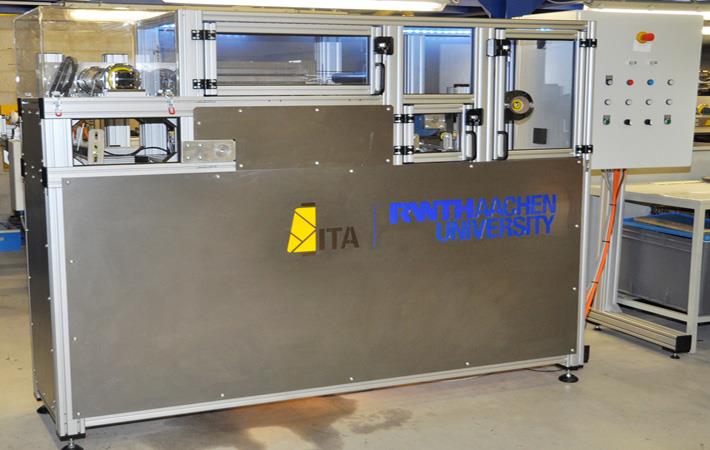The Aachen University (ITA) is set to display new innovations in glass and carbon fibre production at the joint stand of the Aachen Centre for Integrative Lightweight Construction AZL at JEC World 2020, in hall 5A, stand D97. The international composites show, JEC World, will be held from March 3-5, 2020, at the Paris Nord Villepinte Exhibition Centre.
ITA will present the novel multi-fibre coating system live on a laboratory scale. The multi-material fibre coating line coats or impregnates rovings made of various materials and produces TowPregs, also known as pre-impregnated rovings, from thermoplastics and carbon fibres live at the JEC booth. TowPregs can be processed by winding or braiding. They are used in drive shafts in the automotive or the aerospace industry, for example, according to ITA.The Aachen University (ITA) is set to display new innovations in glass and carbon fibre production at the joint stand of the Aachen Centre for Integrative Lightweight Construction AZL at JEC World 2020, in hall 5A, stand D97. The international composites show, JEC World, will be held from March 3-5, 2020, at the Paris Nord Villepinte Exhibition Centre.#
The university will display the carbon fibre production - halving the cost and stabilisation time. One of the core research areas at ITA is the production of carbon fibres. ITA has a continuous pilot-scale carbon fibre production plant with a production capacity of less than one ton per year. Due to its comparatively small size and the resulting low material input, the plant is ideally suited for the development of new stabilisation and carbonisation profiles and the testing of new fibre sizings.
The current main goal of research in carbon fibre production is to shorten the stabilisation time. By developing a novel method the stabilisation time at ITA could be reduced from initially 50 minutes to approximately 21 minutes. The resulting fibres are at the level of a Toray T700 carbon fibre.
ITA will also be showing the textile technology and photonics revolutionise joining technology. Carbon fibre-reinforced (CFRP) components are normally assembled by fasteners that are glued into the cured and drilled CFRP component. The integration of the fasteners into a textile preform and an additional curing process to produce the final CFRP component can shorten production process chains and can increase the performance of the joint by at least 50 per cent. This requires high-precision cut-outs in the textile for the fasteners.
In the NRW-based project CarboLase, funded by OP.EFRE, laser material processing is integrated for the first time into an automated preforming process. A novelty in the process is the use of the material-friendly ultrashort pulsed laser, which processes the textiles without damaging them thermally.
By combining the technologies in a flexible robot cell, just-in-time production of CFRP components with integrated fasteners is now possible independent of component geometry and batch size. With the new process chain, demonstrators were produced fully automatically.
Fibre2Fashion News Desk (GK)


